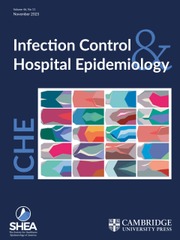No CrossRef data available.
Article contents
Multiplexed gastrointestinal PCR panels for the evaluation of diarrhea in patients with acute leukemia
Published online by Cambridge University Press: 08 November 2024
Abstract
To better delineate multiplexed gastrointestinal polymerase chain reaction (PCR) panel (MGPP) diagnostic and therapeutic stewardship for patients undergoing treatment for acute leukemia including indications and benefits of testing, optimal timing, and interpretation of results.
We retrieved all MGPP ordered on 662 consecutive patients admitted with newly diagnosed acute leukemia between June 2015 and May 2024.
Regional referral center for acute leukemia.
Fifty-one (17%) of 305 MGPP obtained on the 198 patients who underwent testing identified at least one and 4 (1%) more than one diarrheagenic pathogen. The probability of a positive result was greater if obtained as an outpatient [20/52(38%)], but was not related to type of leukemia, sex, or age. Among the positive results, the pathogens identified included Clostridioides difficile (78% of tests), norovirus (16%), diarrheagenic Escherichia coli (6%), adenovirus 40/41 (4%), and Giardia lamblia (4%). The results of 30 of the 305 tests resulted in a change in treatment (28 C. difficile, 2 G. lamblia). For the MGPP C. difficile results with an accompanying toxin determination, this included treatment following 16/19 tests with a positive toxin result and 11/19 with a negative. Actionable results other than C. difficile were rarely seen in the inpatient population.
MGPP testing is most useful when administered as an outpatient and of little benefit for inpatients with hospital-onset diarrhea. Since MGPP is sensitive and does not distinguish between colonization and causes of diarrhea, caution is needed in interpretation of results, especially for toxin-negative C. difficile.
- Type
- Original Article
- Information
- Copyright
- © The Author(s), 2024. Published by Cambridge University Press on behalf of The Society for Healthcare Epidemiology of America



